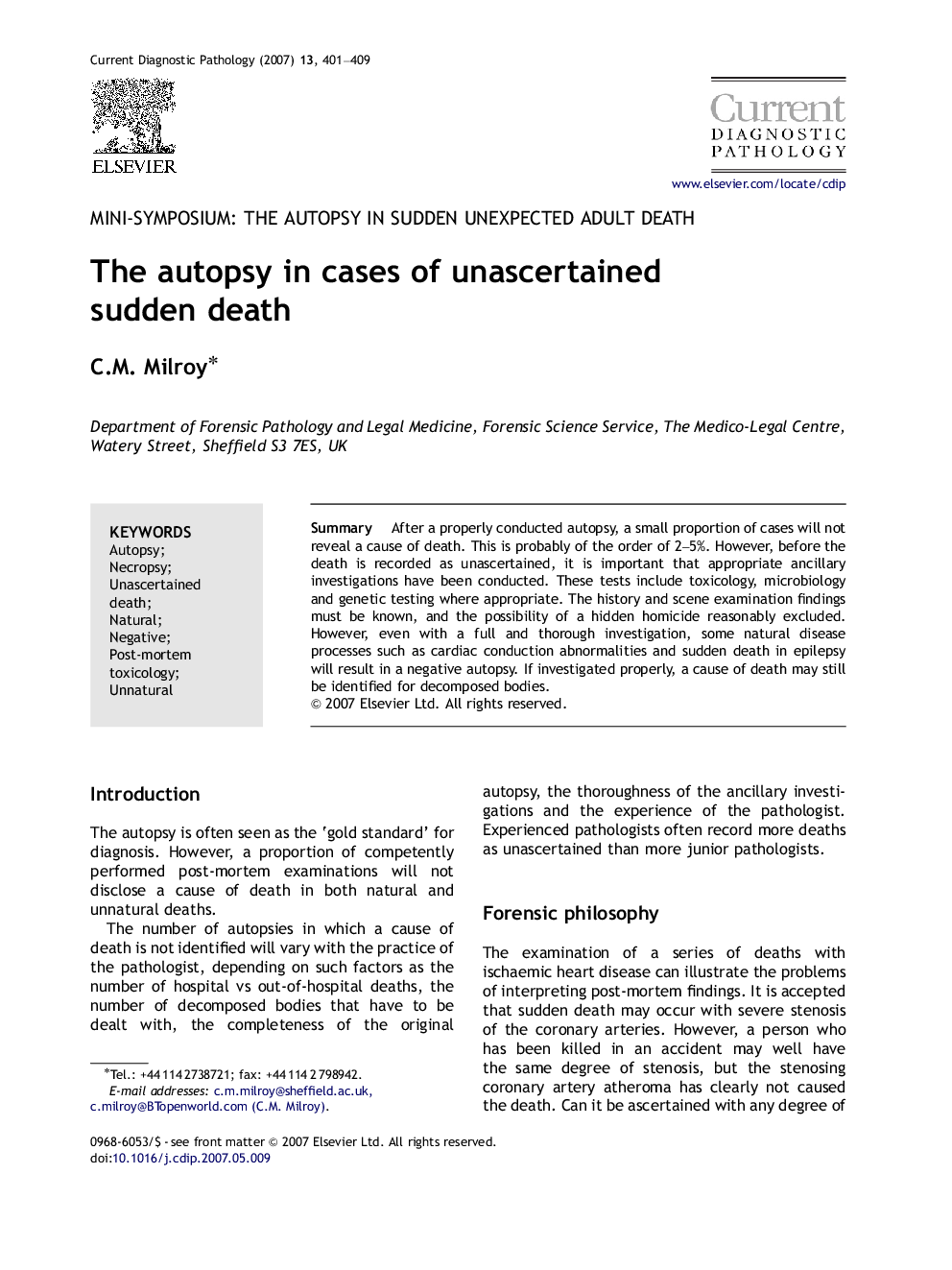| Article ID | Journal | Published Year | Pages | File Type |
|---|---|---|---|---|
| 4130830 | Current Diagnostic Pathology | 2007 | 9 Pages |
SummaryAfter a properly conducted autopsy, a small proportion of cases will not reveal a cause of death. This is probably of the order of 2–5%. However, before the death is recorded as unascertained, it is important that appropriate ancillary investigations have been conducted. These tests include toxicology, microbiology and genetic testing where appropriate. The history and scene examination findings must be known, and the possibility of a hidden homicide reasonably excluded. However, even with a full and thorough investigation, some natural disease processes such as cardiac conduction abnormalities and sudden death in epilepsy will result in a negative autopsy. If investigated properly, a cause of death may still be identified for decomposed bodies.
